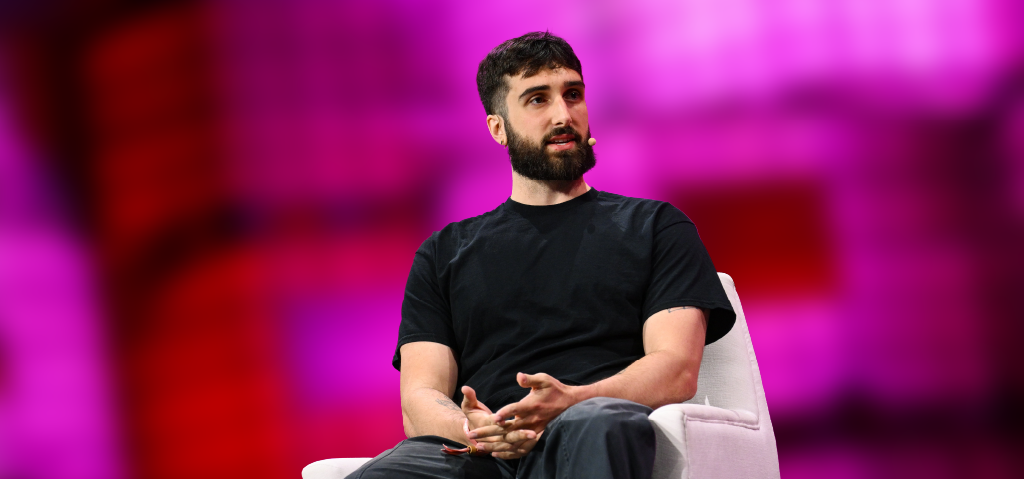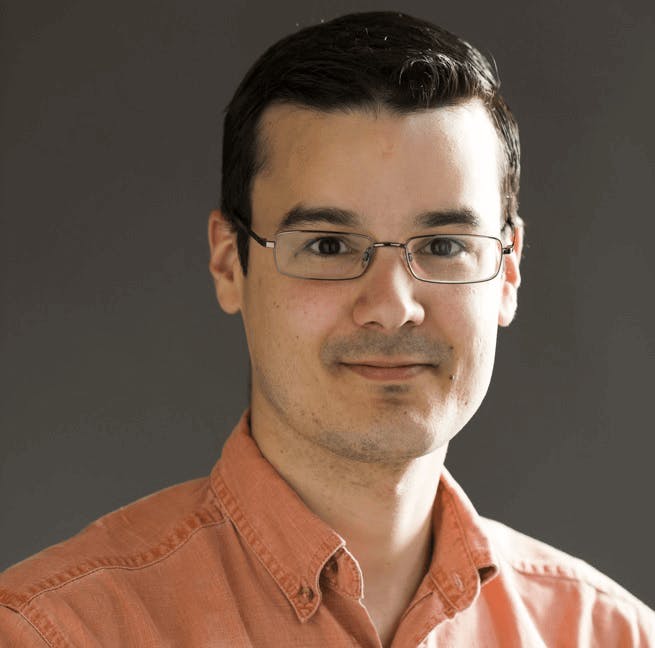
Engineer’s Corner: Q&A with Andy Correa

Looking for an engineering job? Find out what it’s like to work in engineering at Web Summit, direct from one of the software engineers on our product engineering team: Andy Correa.
Hi Andy! Where are you from, and what’s your educational and professional background?
I’m from Venezuela and my educational background is actually in the culinary arts. I studied international cuisine and then specialised in bakery and patisserie. I studied computer science as a kid, but retired early on after three years.
I moved back into programming four years ago after being in the restaurant industry for 12 years, having done all sorts of roles, from managing a restaurant to owning my own business to something as simple (but vital!) as a kitchen porter.
When I moved back into programming, I did a boot camp course. In three months, I went from “What is Python?” to “Here is my 100-percent custom-made website with front-end, back-end, database and API calls”. It was daunting, but with help from my wife and friends, I managed to do it.
Why did you join Web Summit?
I knew about Web Summit because my wife, Gabriela Guedez, has worked here on the marketing team for three years.
I already considered the online events space a massive success from a technical point of view, and having met a few of my now colleagues over the years, Web Summit became a place I was drawn to.
Seeing the organisation from an outside perspective – I saw there were a lot of meetings, so people feel involved, plus everyone’s work contributes to the greater whole and makes them feel like they have an impact on a massively complex event – made me feel like being here, working side-by-side with some of the smartest people I’ve met, would be not only great for my experience as a budding programmer, but also for my social life, in and out of the office environment.
How would you describe your role here?
Right now, I would describe my role as a support character in a very complex team. My teammates in admin tooling seem to have their hands in a lot of different, complex systems, from provisioning servers and environments to standalone software, to API endpoints that enable a lot of other teams.
Although the work has been very enjoyable, I’m still learning what all the systems are, how they interact, and how we as a team manage them. My teammates – all of them – have been extremely supportive, and I feel very comfortable with them at this point. They all pitch in, and they all answer a multitude of questions from the very basic to the very specific.
What tech stack do you work with at Web Summit?
I’ve done some front-end work and some back-end work already, and I’m in the process of learning more and more, from React and Rails to Slim, GraphQL, TDD and everything in between.
It’s a lot to take in, but I feel everyone has been very patient, and I’m very grateful for that. In the future, I will also be learning the parts of AWS we use, although for now, I have enough on my plate.
Since my experience was more Python-based, I’ve been slowly chipping away mostly at Rails (including Slim, testing and GraphQL integration) and React.

What are some of the most common challenges that your team has to solve and work on?
From what I’ve noticed, it’s mostly adding features that other teams need or request to our systems. We plan our sprints around adding useful features, and around making some improvements to existing features as well.
There’s not a lot of bug fixing, as we have a Pull Request review system in place so that nothing gets pushed without at least three pairs of eyes going through the code and all the implications of that particular branch [a branch is a copy of the main source code for a particular system that you can experiment with without the risk of breaking anything on the main source code that is deployed].
Sometimes we do have to fix things in a hurry as a team, but I feel those cases are rare – at least for now.
What’s the most challenging project that the team has worked on?
Right now, I would say the broadcast system for one of our recent contracts. There needs to be a lot of automation around changing streamable content at specific times of the day so that online streams are synced with things happening live.
Another challenge was that our ticket registration system, Robeka, needed to have a standalone install so it would work even if an internet connection is not available, as that could be a problem we face on the registration counters.
How does the engineering team help other teams in Web Summit?
It seems we have a lot to do with adding system features that other teams request to make their jobs easier. A lot of our work tickets have to do with this type of work, so there’s a lot of interaction between my manager, the product owner, and other team leads.
What aspect of your work do you enjoy the most?
Broadly, I love that I’m working on a team that really knows what they’re doing. The speed at which they solve issues and implement features is impressive. There’s a lot of knowledge concentrated there, and I hope I can start contributing more and more to the workflow.
More specifically, I’ve really enjoyed working with GraphQL integration. It’s an impressive way of handling data transfers, and I hope I can learn more about it. React has also been a treat to work with, as has Rails. I feel both interlace very well with my previous knowledge of front- and back-ends.
What do you do for fun? Do you have any hobbies?
I like playing video games with my friends, mostly for the social aspect. I’m not very competitive, so I tend towards co-op experiences.
I also used to be the Dungeon Master for my Dungeons and Dragons group – something I enjoyed very much and I hope to continue in the future when social gatherings normalise a little more. We tried the online thing, but it’s just not the same as sitting around a table rolling dice and seeing people’s excited faces (and having them groan at my attempts to give accents and voices to my characters).
Recently, I was also gifted a 3D printer, which I’ve been using nearly non-stop for the past while, printing all manner of gadgets and pieces for the house. It’s something I can see getting myself very much into, and I’m looking forward to figuring out all the things I can print and design.
In that vein, I’ve also started to learn a little bit of CAD design so that I can design exactly what I need and then print it. They said “You wouldn’t download a car!”, but I guess I could maybe, sometime in the future.
Interested in joining our engineering team? Check out Web Summit’s careers page for more information, and for current job opportunities.
Main image: Web Summit


